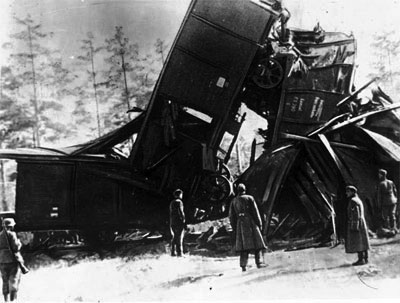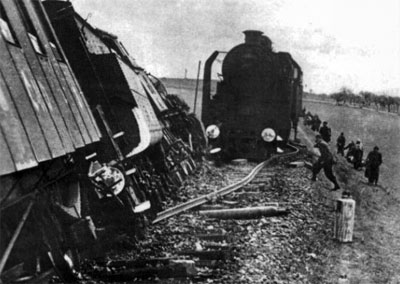Leonid Grenkevich's
The Soviet Partisan Movement, 1941-1944 argues that the Soviet partisans behind the German lines were effective in their efforts to destroy communications. One major success was the dismantling of railways, which were critical to German logistics. When lacking explosives for basic demolitions, partisans were said to dismantle rails and hide them in marshes, rivers or lakes. Grenkevich notes, "in this fashion, in August 1943 the fighters of three large partisan units in the Rovno District of the Ukraine managed both to blow up and dismantle about 34 kilometres of permanent railroad way." (249) Actions such as this led to the greatest success of the partisans during the war, greatly hampering the later stages of the Battle of Kursk.
Partisans reportedly innovated in their methods of disrupting German rail traffic. Removing both rails and sleeping cars, they would pile these up on top of each other resembling a layered "culinary delicacy". When these so called "puff-pastries" were set on fire, the result was rails which were so mangled, they would never be used again. Partisans near Minsk reportedly bent rails in such a way that they could never be used again, reminiscent of the famed Sherman's neckties in his destructive march to the sea.


No comments:
Post a Comment